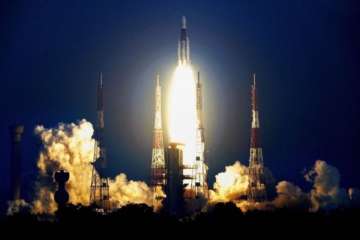India on Wednesday successfully launched its most power rocket GSLV-MarkIII-D-2 with a capacity to lift loads upto 4 tonnes. It paves the way for the India's ambitious Chandrayaan II moon mission and Ganganyaan space mission, giving the country a competitive edge in the world. GSAT-29 satellite, which was launched using GSLV Mark III, is a communication satellite aimed at providing high throughput services to rural India.
Here are the seven important points about GSLV-MarkIII-D-2:
1) GSLV-MarkIII-D-2 weighs 3,423kg and is the heaviest launcher in India. It is taller than a 13-story building (43 meters, to be precise) and even then, it is the shortest Indian launcher.
2) The second developmental flight of the rocket on Wednesday hurled a 3.42 tonne experimental multibeam GSAT-29 communication satellite that will have a capability to beam high-speed internet to remote areas — Northeastern states and Jammu and Kashmir.
3) GSLV-MarkIII-D-2 is capable of lifting up to 4-tonne mass to Geosynchronous Transfer Orbit or a 10-ton payload to Low Earth Orbit. The earlier rocket, GSLV Mark II could lift only 2.5 tonnes.
4) The first stage of this giant vehicle consists of two S200 boosters which are 26.2 metres long and 3.2 metres in diameter.
5) The Chandrayaan II mission will be launched next year on GSLV-MarkIII-D-2.
6) Gaganyaan, human space flight scheduled for 2022, will also use GSLV-MarkIII-D-2.
7) In June 2018, the Union Cabinet approved ₹4,338 crore (US$600 million) to build 10 GSLV Mk-III rockets over a five-year period.
Some facts about GSAT-29:
1) It is also an experimental satellite, with new technologies in Q(microwave) band and V band being tried for the first time.
2) It has a high resolution camera and optical communication link to help defence forces in rural areas particulary in Northeast and Jammu and Kashmir.
3) It weighs 3,423 kg.
4) Launch of the communication satellite is aimed at providing high throughput services to rural India.
